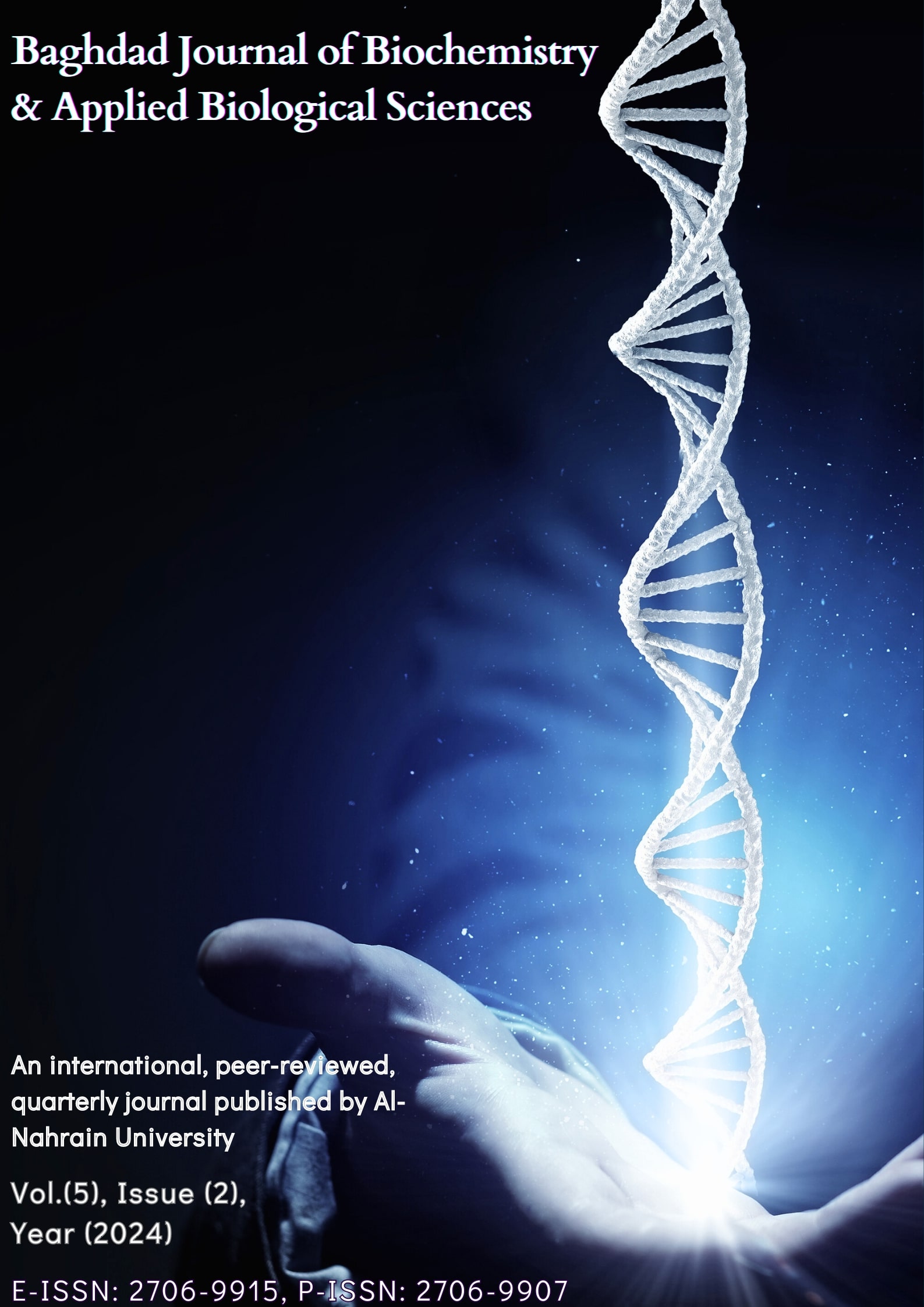Abstract
Alkaline deacetylation of chitin yields chitosan, a naturally occurring polymer with remarkable biological qualities like immunological, antibacterial, and
wound-healing capabilities. Recently, there has been an increase in interest in modifying chitosan chemically to increase its solubility and expand its uses. The usual method for obtaining chitosan is to deacetylate chitin in an alkaline environment. Chitin is one of the most common organic molecules, generated by biosynthesis second only to cellulose yearly. Chitin plays a significant role in the exoskeleton of animals, particularly insects, mollusks, and crustaceans. It is also the main fibrillar polymer found in some fungi’s cell walls. Composed of glucosamine and N-acetyl glucosamine units connected by β (1–4) glycosidic linkages, chitosan is a linear polysaccharide. The degree of deacetylation refers to the amount of glucosamine present. Actually, in a broad sense. This study reviews the major chitosan chemical changes that have been suggested in the literature. Furthermore, a vast variety of derivatives with a wide range of uses are produced by these chemical alterations. instances of recent and pertinent instances of the various uses are provided, with a focus on tissue engineering, medication delivery, and environmental applications. Looking ahead, the future of chitosan modification appears bright, driven by advancements in smart polymers, green chemistry, and nanotechnology. These developments are facilitating the creation of tailormade materials with diverse applications, further expanding the potential utility of chitosan in various fields.
wound-healing capabilities. Recently, there has been an increase in interest in modifying chitosan chemically to increase its solubility and expand its uses. The usual method for obtaining chitosan is to deacetylate chitin in an alkaline environment. Chitin is one of the most common organic molecules, generated by biosynthesis second only to cellulose yearly. Chitin plays a significant role in the exoskeleton of animals, particularly insects, mollusks, and crustaceans. It is also the main fibrillar polymer found in some fungi’s cell walls. Composed of glucosamine and N-acetyl glucosamine units connected by β (1–4) glycosidic linkages, chitosan is a linear polysaccharide. The degree of deacetylation refers to the amount of glucosamine present. Actually, in a broad sense. This study reviews the major chitosan chemical changes that have been suggested in the literature. Furthermore, a vast variety of derivatives with a wide range of uses are produced by these chemical alterations. instances of recent and pertinent instances of the various uses are provided, with a focus on tissue engineering, medication delivery, and environmental applications. Looking ahead, the future of chitosan modification appears bright, driven by advancements in smart polymers, green chemistry, and nanotechnology. These developments are facilitating the creation of tailormade materials with diverse applications, further expanding the potential utility of chitosan in various fields.
Keywords
Biodegradability
Chitosan
graft copolymerization
organic modification
Abstract
إزالة الأسيتيل القاعدية للكايتين تنتج الكايتوسان، وهو بوليمر طبيعي يتميز بخصائص بيولوجية مذهلة مثل القدرات المناعية، المضادة للبكتيريا، والمساعدة في التئام الجروح. مؤخرًا، زاد الاهتمام بتعديل الكايتوسان كيميائيًا لتحسين قابليته للذوبان وتوسيع نطاق استخداماته. الطريقة المعتادة للحصول على الكايتوسان تتمثل في إزالة الأسيتيل من الكايتين في بيئة قاعدية. يُعد الكايتين واحدًا من أكثر الجزيئات العضوية شيوعًا، حيث يتم إنتاجه من خلال التخليق الحيوي بمعدل ثاني أعلى معدل بعد السليلوز سنويًا. يلعب الكايتين دورًا هامًا في الهيكل الخارجي للحيوانات، لا سيما الحشرات، الرخويات، والقشريات. كما يُعتبر البوليمر الليفي الرئيسي الموجود في جدران الخلايا لبعض أنواع الفطريات.
يتكون الكايتوسان من وحدات الجلوكوزامين وN-أسيتيل الجلوكوزامين المرتبطة بروابط غليكوسيدية β (1-4)، وهو بوليمر سكري خطي. يشير \\\\"درجة إزالة الأسيتيل\\\\" إلى كمية الجلوكوزامين الموجودة. في الواقع، يُعد الكايتوسان مادة ذات تطبيقات واسعة النطاق.
تستعرض هذه الدراسة التعديلات الكيميائية الرئيسية التي تم اقتراحها في الأدبيات العلمية للكايتوسان. علاوة على ذلك، تُنتج هذه التعديلات الكيميائية مجموعة واسعة من المشتقات التي تمتلك مجموعة متنوعة من الاستخدامات. يتم تقديم أمثلة حديثة وذات صلة عن الاستخدامات المختلفة، مع التركيز على الهندسة النسيجية، إيصال الأدوية، والتطبيقات البيئية.
بالنظر إلى المستقبل، يبدو أن تعديل الكايتوسان يحمل آفاقًا واعدة، مدفوعًا بالتقدم في مجال البوليمرات الذكية، الكيمياء الخضراء، وتكنولوجيا النانو. تسهل هذه التطورات إنشاء مواد مصممة خصيصًا لتطبيقات متنوعة، مما يوسع بشكل أكبر الإمكانيات العملية للكايتوسان في مختلف المجالات.
يتكون الكايتوسان من وحدات الجلوكوزامين وN-أسيتيل الجلوكوزامين المرتبطة بروابط غليكوسيدية β (1-4)، وهو بوليمر سكري خطي. يشير \\\\"درجة إزالة الأسيتيل\\\\" إلى كمية الجلوكوزامين الموجودة. في الواقع، يُعد الكايتوسان مادة ذات تطبيقات واسعة النطاق.
تستعرض هذه الدراسة التعديلات الكيميائية الرئيسية التي تم اقتراحها في الأدبيات العلمية للكايتوسان. علاوة على ذلك، تُنتج هذه التعديلات الكيميائية مجموعة واسعة من المشتقات التي تمتلك مجموعة متنوعة من الاستخدامات. يتم تقديم أمثلة حديثة وذات صلة عن الاستخدامات المختلفة، مع التركيز على الهندسة النسيجية، إيصال الأدوية، والتطبيقات البيئية.
بالنظر إلى المستقبل، يبدو أن تعديل الكايتوسان يحمل آفاقًا واعدة، مدفوعًا بالتقدم في مجال البوليمرات الذكية، الكيمياء الخضراء، وتكنولوجيا النانو. تسهل هذه التطورات إنشاء مواد مصممة خصيصًا لتطبيقات متنوعة، مما يوسع بشكل أكبر الإمكانيات العملية للكايتوسان في مختلف المجالات.
Keywords
الكايتوسان، التعديل العضوي، البلمرة التشاركية بالتطعيم، القابلية للتحلل البيولوجي
